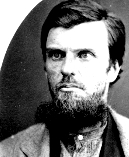Uploaded photos to Facebook or Flickr? Shared stories by email with friends and family? Made artworks or saved documents on your PC? Got a great snap of your kids on your phone?
If this personal digital archive disappeared tomorrow—how would you feel? What about about future generations of your family?
Although the web is relatively young, our use of it is growing exponentially. This is apparently
what happens every 60 seconds on the internet:
- 6,600+ pictures are uploaded to Flickr
- 600 videos are uploaded to YouTube, amounting to 25+ hours of content
- 695,000 status updates, 79,364 wall posts and 510,040 comments are published on Facebook
- 168,000,000+ emails are sent
- 98,000 tweets are generated on Twitter
- 20,000 new posts are published on Tumblr

Even if you think just a millionth of that stream is worth keeping, it’s still a lot of data. And how do you know which bits are the good bits?
Last night I went to the ‘Recordkeeping Roundtable’ event
Where do old websites go to die? with
Jason Scott, founder of
Archive Team, ‘a loose collectives of rogue archivists, programmers, writers and loudmouths dedicated to saving our digital heritage.’
Jason is an entertaining speaker (in Australia he might be called a sh*t stirrer) with an inexhaustible line in analogies.
If you came back to your parking spot and your car was gone, he said, you wouldn’t shrug your shoulders and say “oh well.” But that’s what happens when we upload our stuff to the web and the companies that host it disappear. There should, he said, be a law against it.
Right now Jason and his volunteer force of web preservationists are busy
saving GeoCities for posterity — ‘working hard to save your junk’ is how he describes it.
GeoCities was a popular web hosting service, founded in 1994 and purchased by Yahoo in 1999. It allowed people to publish for free and was once the 3rd most-browsed site on the World Wide Web.
“Organisations also like to think they’re immortal.”
Does
the cloud make archiving irrelevant?
Jason said ‘cloud people’ are just “hiding the bunny”. It’s a magic trick. Behind the curtain, the same old issues are playing out. He pointed to
Amazon’s recent drop-out and
DropBox’s 4 hour password snafu.
Over at the
Internet Archive – the gold standard for ‘Internet Library’ – three hard drives die every day, but failure is factored into their archiving process. Nothing is lost.
Jason is not only archiving our digital history. He’s collecting the lore that surrounds technologies and communities, with films like
BBS: The Documentary and
GET LAMP: a documentary about adventures in text.
As the Archive Team say, “
HISTORY IS
OUR FUTURE—And we’ve been trashing our history”.
Incidentally, the
Internet Archive is a fantastic resource for books, films and music. Mary Lou Byrne, Local Studies Librarian, today sourced
public domain music from the Archive for a
Mosman Faces trailer
(coming soon).
And if you’d like to hear a good story on digital archaeology, check this
BBC radio doco on technology and the art of archiving the work of writers and poets.
Source: Mosman Library blog







![NRS906 Special Bundles [Colonial Secretary] - 1880 Letters of Scott "Moonlight" and Rogan written while awaiting execution in Darlinghurst Gaol ([4/825.2]; microfilm copy SR Reel 2868, photocopy City COD291)](http://archivesoutside.records.nsw.gov.au/wp-content/uploads/2011/06/Moonlight-letter-to-reverend.jpg)
![NRS906 Special Bundles [Colonial Secretary] - 1880 Letters of Scott "Moonlight" and Rogan written while awaiting execution in Darlinghurst Gaol ([4/825.2]; microfilm copy SR Reel 2868, photocopy City COD291 p.204)](http://archivesoutside.records.nsw.gov.au/wp-content/uploads/2011/06/Moonlight-letter-to-mother-page-1.jpg)
![NRS906 Special Bundles [Colonial Secretary] - 1880 Letters of Scott "Moonlight" and Rogan written while awaiting execution in Darlinghurst Gaol ([4/825.2]; microfilm copy SR Reel 2868, photocopy City COD291 p.205)](http://archivesoutside.records.nsw.gov.au/wp-content/uploads/2011/06/Moonlight-letter-to-mother-page-2.jpg)







![The Grantseeker Manual [grantseeker 1.jpg] The Grantseeker Manual [grantseeker 1.jpg]](http://www.communitybuilders.nsw.gov.au/pics/grantseeker_1.jpg)